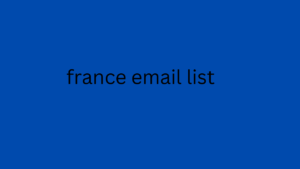Share this article
Designing a brand identity for your business is a fun and creative process, but the pressure france email list to create a design that represents your business values and has commercial appeal can feel like a barrier that is too difficult to overcome.
Following a structured action plan will help you avoid mind wandering and keep your ideas moving forward.
In this article, I share 3 steps to approach a brand design project , which will help your business identity feel unique, developed and super professional.
How to create a brand identity from scratch
When designing a brand, the number of tasks to be done, such as naming (you can use naming tools ), logo , website and graphic identity documents , can be overwhelming. Breaking the process down into manageable chunks will allow you to balance creative and administrative work, which leads to real progress.

1 – Do your research
No business exists in a vacuum, that much is obvious. But it’s amazing how many entrepreneurs completely forget this when they embark on a brand design project .
Many will jump into design ideas immediately, neglecting the fact that their brand will inevitably exist in a competitive market.
To avoid looking like your brand was designed by an alien or, even worse, to avoid mistakenly imitating an existing design (see the unfortunate Tokyo 2020 logo debate as an extreme example), you need to do some research into your competitors’ brands.
If you're a freelance creative , take a look at how local design firms and advertising agencies present themselves online and in their offices.
Designing a brand for a product? Google your industry and switch to images to get a sense of what is considered appropriate (read: sellable) for brands in your industry.
Pinterest is a brilliant resource for researching which brands in a given industry are most highly regarded for their design.
2 – Know your niche
Okay, let’s assume you’ve looked at your competition and dissected how they approach their own brand designs . Now you need to file that knowledge to the back of your brain and focus on your brand’s goal.
The tricky part? How can you ensure that your brand fits into the right market sector , and somehow appears relevant against competing brands, as well as making sure that your brand is not only unique, but also superior to those competitors?
Imagine staring at a Van Gogh painting for hours, and then someone tells you to paint something similar, but different and even better. Not an easy feat, right?
Now that you’ve put together your competitor brand research list, you can put that aside for now. Don’t worry – you won’t forget what the competitor brands were like now that you’ve spent the time researching them.
What’s important is that you feel able to create a brand design that feels fresh and unique. A design that references your positioning against these competing brands without copying them.
3 – Putting Pencil to Paper
When a consumer first comes into contact with a brand, the first visual thing they might encounter is the brand logo . What’s the first thing you see on a store sign? Yep, the logo. What’s on the side of your morning coffee cup? You guessed it.
Unless you're encountering a product blindly—say, for example, you try out a product a friend has already purchased without first knowing its brand—it's nearly impossible to interact with a product without first seeing the logo of the company that makes it.
For most brands, their logo is a condensed interpretation of everything the brand stands for. You can interpret a lot about a business from its logo alone.
They may have opted for a serif font to appear more formal or elegant, while a script font can make a brand feel more casual and craft-oriented.
The psychology of color is a factor to consider. For example, too much orange conveys optimistic and positive feelings, while blue is calming and represents something technological. Bringing in a metallic tone like gold or copper can increase the luxury factor and make a brand feel more aspirational.
Because a logo is not only the first port of call for your brand's customers, but also a visual summary of everything you want your brand to be, the logo is a natural starting point for creating your brand identity design.
To start creating a logo, you’ll need to step away from your computer for a while. Grab a pen or pencil and a large sketchpad. Start by drawing quick doodles that represent basic ideas.
